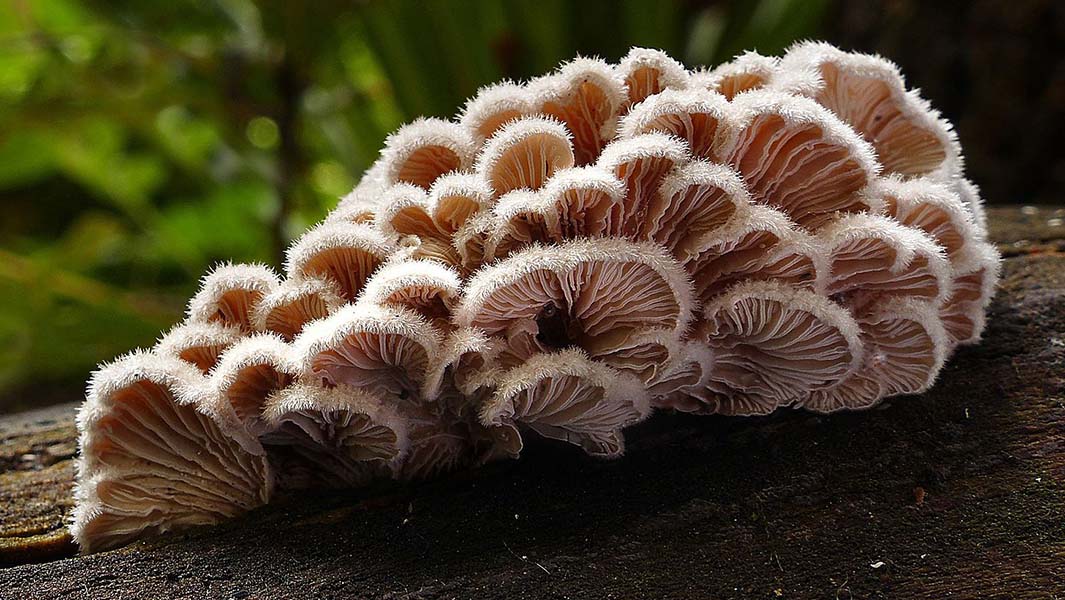


Animals typically have two biological sexes, male and female, defined by the presence of specific reproductive organs and differences in gametes, such as sperm and eggs.
‘Mating types’ are the microorganism and fungi equivalent to sexes, and only individuals with different mating types can engage in sexual reproduction.
Some members of the fungi kingdom have many mating types, such as the fairy inkcap mushroom (Coprinellus disseminatus) with 143. Each one is able to reproduce with members of any of the other 142 types.
But this number pales in comparison to the world’s most sexually compatible organism, the split gill mushroom (Schizophyllum commune), which has an estimated 23,328 distinct mating types.
Having this astonishing number of sexually compatible partners is an evolutionary adaptation that minimises the risk of siblings mating, thereby maximising genetic diversity.

Split gill mushrooms, commonly found on rotting wood, grow in shelf-like arrangements without stalks, and exist on every continent in the world except Antarctica.
The unique split ‘gills’ on the underside of the mushroom’s cap enable it to survive in such varied locations. The mushroom’s gills close over its fertile surfaces during dry weather, and it can remain that way for years – even decades – before being rehydrated by rain, whereupon it reopens to release spores.

In most cases where fungi appear to be similar but exist on separate continents, DNA analysis shows that their genetic separation is significant enough for them to be classified as separate species.
However, the split gill mushroom was proven to be one species worldwide by mycologist John Raper and his team at Harvard University. During the 1950s-70s, Raper’s team collected split gill mushrooms from around the globe and grew mycelia (the vegetative parts of fungi) from germinated spores. They observed that strains of different mating types from different continents were able to mate with each other, proving that they were of the same species.
Want more? Follow us on Google News and across our social media channels to stay up-to-date with all things Guinness World Records! You can find us on Facebook, Twitter/X, Instagram, Threads, TikTok, LinkedIn, and Snapchat Discover.
Don't forget to check out our videos on YouTube and become part of our group chat by following the Guinness World Records WhatsApp channel.
Still not had enough? Click here to buy our latest book, filled to the brim with stories about our amazing record breakers.